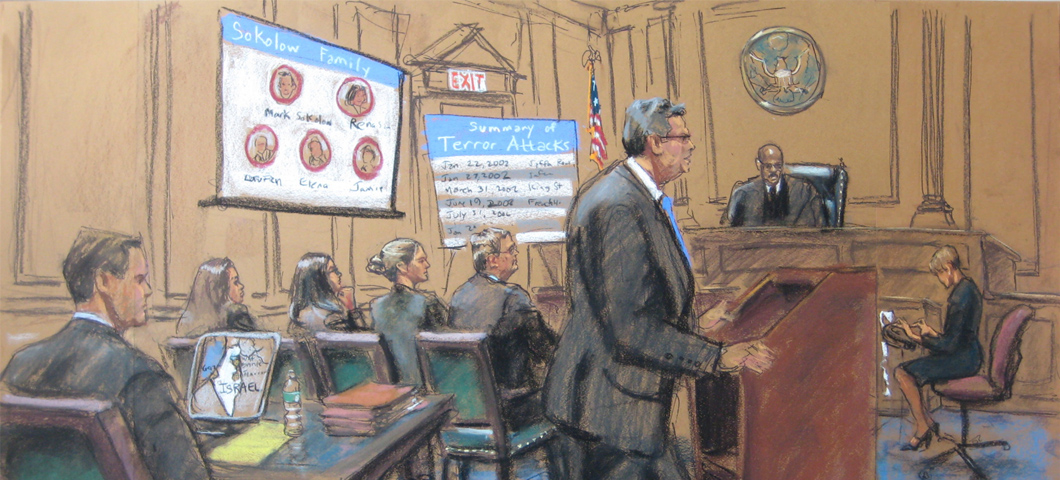Trial Presentation Reliable Solutions for Organizing and Presenting Evidence
Trial Presentation Reliable Solutions for Organizing and Presenting Evidence
Blog Article
Mesmerize the Jury: Crucial Components of a Powerful Test Presentation
Vital components such as comprehending the audience, crafting an engaging narrative, and understanding verbal and non-verbal interaction are important elements of an efficient presentation. As these variables intertwine, they create a natural approach that not only informs but also involves jurors on numerous degrees.

Comprehending Your Target Market
Comprehending your audience is an essential facet of reliable test discussion. An effective discussion hinges on the capability to understand the demographics, values, and predispositions of jurors. This understanding educates how arguments are framed, proof is presented, and sob stories are crafted, guaranteeing that the message resonates with the jurors on an individual level.
Study shows that jurors originated from varied backgrounds and might have differing levels of recognizing pertaining to lawful process (trial presentation). Thus, it is important to avoid lawful lingo that might alienate or puzzle them. Instead, employing clear, relatable language fosters involvement and understanding. Furthermore, comprehending the jurors' prospective biases and life experiences enables the trial speaker to anticipate arguments and address problems proactively.
Efficient test presentation additionally involves observing jurors' responses throughout the proceedings. Involving with jurors as people rather than a cumulative system is essential in promoting a solid connection in the court.

Crafting an Engaging Narrative
Crafting an engaging narrative is important in leading jurors with the complexities of an instance. A well-structured narrative not only streamlines intricate lawful concepts yet also involves jurors on an emotional degree, making the info more relatable and unforgettable.
To achieve this, lawyers ought to begin by identifying the core message they desire to convey. This message must resonate with the jurors' worths and experiences, fostering a link that transcends plain truths. The narrative needs to unfold logically, providing events in a clear series to avoid complication. This chronological strategy can help jurors adhere to the development of events, highlighting domino effect.
Incorporating human aspects-- such as individual stories or stories-- can further improve the narrative's impact. These aspects evoke empathy, enabling jurors to visualize the consequences of the situation on the real worlds. Additionally, employing a constant style throughout the discussion enhances the major argument, making it simpler for jurors to maintain essential points.
Ultimately, a compelling narrative transforms a trial presentation from a simple recounting of realities right into a persuasive story that captivates the jury, motivating them to ponder with both factor and feeling.
Using Aesthetic Aids
Incorporating visual aids into a test discussion can dramatically boost jurors' understanding and retention of information. Aesthetic products such as graphes, layouts, pictures, and video clips can change intricate lawful concepts and evidence into conveniently digestible styles. By involving numerous detects, these help enable jurors to picture the instance's vital components, making it easier for them to adhere to along and realize intricate details.
Furthermore, properly designed aesthetic help can stress crucial points and highlight relationships between different pieces of proof. As an example, timelines can properly highlight the sequence of occasions, while annotated pictures can clarify certain information relevant to the situation. This not only help in understanding however additionally enhances the narrative offered by the attorney.
Extremely intricate or chaotic visuals might overwhelm jurors and take away from the message. Eventually, reliable aesthetic communication can be an effective device in encouraging jurors and aiding them get to notified final thoughts.
Mastering Verbal Interaction
Effective verbal interaction is vital in a trial presentation, as it functions as the main ways through which attorneys share their disagreements and get in touch with jurors. Grasping this ability includes clearness, persuasion, and interaction. Lawyers have to express their points clearly and concisely, avoiding lawful jargon that might confuse jurors. Simplicity in language promotes understanding and helps jurors understand intricate problems provided throughout the trial.
In addition, tone and pacing considerably impact exactly how helpful site messages are received. A confident tone conveys authority, while proper pacing allows jurors to soak up information without feeling bewildered. Attorneys need to also differ their singing inflections to emphasize key factors and maintain jurors' passion throughout the discussion.
In addition, the company of spoken arguments is necessary. Structuring the narrative logically and coherently aids jurors follow the attorney's logic, making it simpler for them to preserve critical info. read what he said Making use of persuasive methods, such as storytelling, can likewise improve the emotional resonance of the debates offered, consequently producing a much more extensive link with jurors.
Inevitably, understanding verbal communication not just strengthens an attorney's situation however also fosters depend on and relationship with the court, considerably enhancing the chances of a desirable judgment.

Engaging With Body Language
Nonverbal interaction plays a crucial function in trial discussions, frequently conveying messages that words alone can not reveal. Body language, incorporating motions, position, face expressions, and eye call, considerably affects just how jurors perceive the reputation and sincerity of the presenter. A confident stance, with shoulders back and an open stance, can infuse depend on, while closed-off body language may suggest defensiveness or uncertainty.

Faces should reflect the emotions related to the case, enhancing the narrative being presented. As an example, an honest expression during an emotional minute can generate compassion and reinforce More Info the sob story. Ultimately, understanding body language is crucial for effective test discussions, as it improves verbal interaction and establishes an engaging presence that reverberates with the jury.
Verdict
To conclude, captivating the court requires a critical method that incorporates comprehending the audience, crafting a compelling narrative, utilizing visual help, grasping verbal communication, and engaging through body language. Each component plays an important role in creating a powerful test presentation that resonates with jurors on both psychological and intellectual levels (trial presentation). By incorporating these elements successfully, legal specialists can dramatically improve their capacity to persuade and affect court decision-making
Report this page